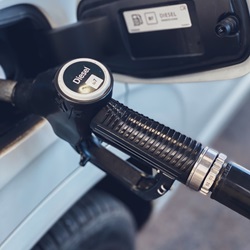
Dieselgate: Claimants’ costs for whole case likely to top £1bn
The High Court has refused to sanction the “absurd” and “staggering” £343m in costs put forward by the claimants for just the first third of the diesel emissions group litigation.
In a joint ruling, Mr Justice Constable and the Senior Costs Judge, Andrew Gordon-Saker, slashed by 75% the £208m in future costs put forward in their budget and suggested that the balance of incurred costs were likely to have been subject to similar “over-lawyering”.
“There appears to be little effort – nor, it seems, incentive – to run this litigation in a manner so as to minimise, as far as is reasonably possible, the number of lawyers and the hours they suggest they need to work in order sensibly to progress this litigation,” they said.
They also nearly halved the defendants’ proposed budgets but said far less about them.
They were carrying out the English courts’ largest-ever costs budgeting exercise in relation to 13 group litigation orders (GLOs) against motor manufacturers and others, such as dealerships and finance companies, over the use of so-called defeat devices whose alleged goal was to cheat emissions tests.
The claimants contend that the litigation is worth at least £6bn, on the basis of damages of £4,000 per car, a figure the defendants dispute. The court noted that the Volkswagen claim settled in 2022 at a figure that equated to just over £2,000 per claimant.
The budgeting exercise covered two tranches of the litigation: tranche 1 is a two-week preliminary issue hearing listed for October to determine the status of decisions on the devices made by German regulators and courts; tranche 2 is the first main evidential phase about the defeat devices.
The latter gave rise to “a complicated exercise of technical and legal analysis”, the court acknowledged – but the claimants had “significantly” overstated the complexity.
There were also costs which would impact all of the claims and require coordination with the 20 claimant law firms.
Pogust Goodhead is the lead solicitor on four of the GLOs, and jointly with Leigh Day on eight more. For one (Vauxhall), it is Milberg and KP Law.
The court estimated that, by the end of tranche two, the litigation would be around a third complete. This would suggest, “at least on a linear basis” that the claimants’ total common costs would exceed £1bn, but it could be even more as the burden in terms of evidence and disclosure would likely increase.
The total incurred and estimated costs sought by the claimants were £343m – of which £208m were future costs – and £307m by the defendants (£212m of future costs).
The court stressed that the claimants’ budgets did not include the costs referable only to, and recoverable by, each claimant.
“While the selection of lead claimants, for the purposes of causation and loss, would avoid each claimant incurring the costs of every phase, there will still be individual costs for each claimant, such as the costs of taking initial instructions and, if the claimants are successful, distributing any award.
“For every hour at the grade D guideline hourly rate spent on each of the claimants, the total for all claimants would be about £300m.”
The court said while the large number of claimants presented “logistical and administrative burdens”, the number of itself “provides little justification for the extraordinary costs claimed in many phases, in which the scope of work required is largely or completely unrelated to the number of claimants”.
The judges said it had “little faith” in the reliability of the claimants’ budgets, notwithstanding that they cost an “extraordinary” £3.65m to draft.
The figures indicated “scant regard for carrying out work in an efficient, non-duplicative and cost-conscious manner”; the court suggested that the model of GLOs – without the “traditional downward pressure imposed by a client on their lawyers” – may be the cause.
“Whatever the reason, the staggering costs both incurred and estimated are in numerous individual respects and in the aggregate frankly absurd and – whether or not the claimants still intend to incur and charge for work on such a basis – this court will not sanction this wholly unreasonable expenditure of costs.”
It said the enormous numbers involved “could only be generated by wildly inefficient resourcing and what might be referred to, using less blunt language than that deployed in the defendants’ submissions, as over-lawyering”.
The problem was more the number of hours claimed rather than the hourly rates. For example, the total solicitor time claimed by the claimants across all claimant firms and all phases between last month’s hearing and spring 2026 was over 263,600 hours.
“That equates to over 12,500 hours per month, or the equivalent of 50 solicitors consistently working 250 billable hours per month – in addition to the very significant counsel team involvement.
“This is far in excess of time reasonably demanded by this litigation and could only be explained by an approach redolent of inefficiency and duplication both within and between firms.”
The court reduced the claimants’ future costs to £52m and the defendants to £114m, a 46% reduction, but it did not explain why in anything like the same detail – although it observed that the defendants provided more information in their budgets. It also accepted the need for separate representation.
The defendants acknowledged that they were, in some instances, paying higher rates than those claimed, which the court said was acceptable “providing there is transparency” as it could bear this in mind when comparing the budgets.
Though budgeting does not cover incurred costs, the court made comments on them for when the costs eventually go for assessment.
It was “a reasonable assumption” that the claimants in particular had approached them in the same way as future costs. This “would lead to the conclusion that the costs incurred to date are as unreasonable as we have considered that the costs estimated plainly are”.














The car companies are in the wrong they should pay